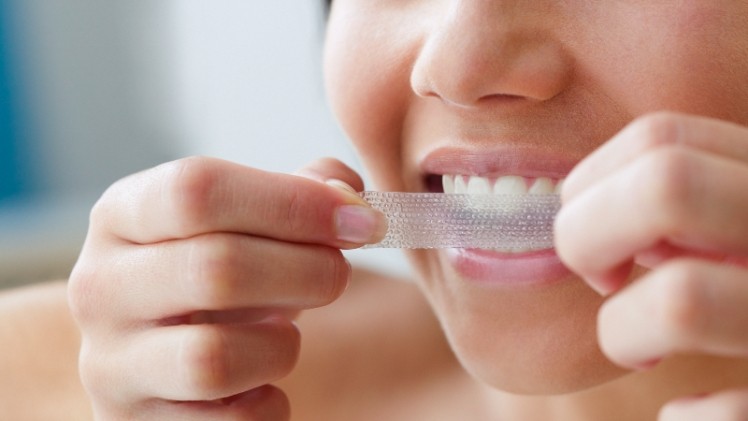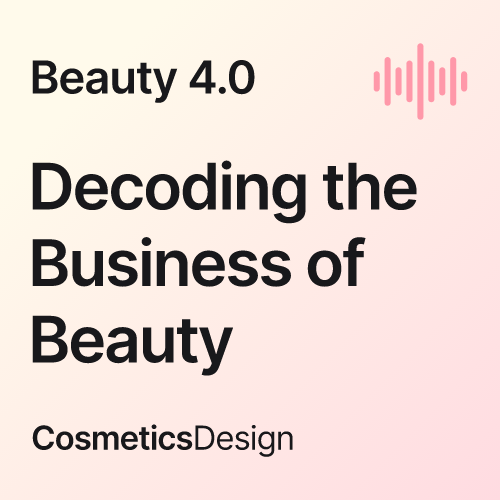Million-dollar smile: Accessibility, affordability, and aversion to side effects key factors in driving teeth whitening trend

The prolonged time spent at home during the pandemic has led consumers to pay greater attention to personal care, from top to toe. An extension of that is the emphasis on oral care, especially as people are gradually returning to the normal rhythms of mask-free life.
According to data from Mordor Intelligence, the APAC oral care market was forecasted to grow at a CAGR of 8.05% to reach US$31.5bn by 2025.
Larger disposable incomes in developing countries, in addition to widespread media representation of teeth whitening as a feature of physical attractiveness, were named as the main drivers for this growth.
In particular, the demand for teeth whitening — often associated with body image and psychological well-being — has escalated.
A study conducted among young adults in South India indicated that 62.1% of participants felt that teeth colour impacted their social life and self-confidence, and that 31.4% preferred home remedies when it comes to teeth whitening.
The findings were published in the International Journal of Advance Research, Ideas and Innovations in Technology.
“Teeth are becoming the focus of beauty on a person’s face. Traditionally, oral care belonged to the healthcare category because beautifying this part of the mouth required a lot of money. For instance, braces were much more expensive 20 years ago,” said Tash Schutts.
“Increasingly, consumers will be able to get toothpaste from department stores and beauty retailers like Sephora. Oral products are no longer only available in supermarkets. And with the advent of at-home teeth-whitening solutions, oral beauty has become an accessible and affordable area of personal care,” founder and CEO of Australian oral care brand Lovebyt said previously on the Beauty Broadcast by CosmeticsDesign-Asia.
On the same note, premium toothpaste brand Euthymol, distributed by LG Household and Health Care (LG H&H), has introduced teeth whitening products in the South Korean market.
These included whitening toothpaste, which will likely see a spike in demand following the easing of the indoor mask mandate from 30 January, said the K-beauty major.
Similarly, personal care giant Colgate-Palmolive is also expanding its teeth-whitening portfolio with the Optic White series.
It includes its Optic White Overnight Teeth Whitening Pen, which is armed with a proprietary active oxygen technology that claims to whiten teeth while the user sleeps and is designed to be enamel-safe.
Safer solutions needed
Consumers today seek products that are convenient, provide noticeable benefits, and do not cause teeth sensitivity or harm the enamel.
Despite the surging demand for teeth-whitening products, consumer concern over conventional peroxide-based formulations, could inhibit the market’s growth.
“For years, people didn’t think twice about what they put on their toothbrushes and into their mouths. As consumers are getting more educated, they know that whatever goes into their mouths get absorbed into the bloodstream, so they now expect to see a transparent list of product ingredients. They want the best ingredients and healthier alternatives.
“I believe the development of new products in the oral beauty sector will be driven by this need to compensate for side effects such as dehydration, and for stronger gum protection,” Shutts added.
One oral care company that has innovated an alternative to peroxide is HiSmile.
Its PAP+ Whitening Strips are formulated with phthalimidoperoxycaproic acid (PAP), an ingredient that oxidises stains without eroding outer layers of the teeth; a nano-synthetic version of hydroxyapatite, which helps to replace minerals in damaged parts of the enamel; and potassium citrate, a desensitising agent that combats pre-existing sensitivity.
Both PAP whitening and peroxide-based formulations use oxidising action to break down stains and lighten tooth colour. In contrast to peroxide, however, PAP does not release harmful molecules known as free radicals during the process, the company claims.
It also said that though effective at reducing discolouration, free radicals tend to bring unwanted side effects, including sensitivity, gum irritation and demineralisation.
HiSmile commissioned a double-blinded clinical trial involving 44 participants aged between 19 and 55, which was conducted by a third-party in an external facility.
Half of the participants received a placebo, while the other half completed a 10-minute teeth whitening treatment comprising the PAP formulation. Their tooth shade and level of sensitivity were assessed pre- and post-treatment.
The findings showed that all participants experienced instant improvement, among which 61.9% saw their teeth lighten by more than three shades. None of the participants reported sensitivity.
![Olive Young is making inroads into the Middle East region. [Wakemake]](/var/wrbm_gb_food_pharma/storage/images/_aliases/wrbm_medium/publications/cosmetics/cosmeticsdesign-asia.com/headlines/business-financial/olive-young-testing-the-waters-in-middle-east-with-makeup-brand-wakemake/16177478-1-eng-GB/Olive-Young-testing-the-waters-in-Middle-East-with-makeup-brand-Wakemake.jpg)
![Neo-traditions and mindfulness are trends that will lead beauty brand collaborations. [Maison Margiela Fragrances]](/var/wrbm_gb_food_pharma/storage/images/_aliases/wrbm_medium/publications/cosmetics/cosmeticsdesign-asia.com/headlines/packaging-design/beauty-brand-collabs-neo-traditions-mindfulness-trends-will-influence-future-beauty-collabs/16155464-1-eng-GB/Beauty-brand-collabs-Neo-traditions-mindfulness-trends-will-influence-future-beauty-collabs.jpg)
![Fixderma has revealed that its top product is a cream that treats acanthosis nigricans. [Fixderma]](/var/wrbm_gb_food_pharma/storage/images/_aliases/wrbm_medium/publications/cosmetics/cosmeticsdesign-asia.com/article/2023/02/01/fixderma-s-sales-dominated-by-cream-that-treats-less-talked-about-skin-pigmentation-disorder/16080833-1-eng-GB/Fixderma-s-sales-dominated-by-cream-that-treats-less-talked-about-skin-pigmentation-disorder.jpg)
![Neurocosmetics can offer the cosmetics industry a novel approach to inclusivity. [Getty Images]](/var/wrbm_gb_food_pharma/storage/images/_aliases/wrbm_medium/publications/cosmetics/cosmeticsdesign-asia.com/headlines/formulation-science/inclusivity-with-neurocosmetic-skin-care/16116035-1-eng-GB/Inclusivity-with-neurocosmetic-skin-care.jpg)

![Indus Valley is working to corner 30% of India's online premium boxed hair colour market. [Indus Valley]](/var/wrbm_gb_food_pharma/storage/images/_aliases/wrbm_tiny/publications/cosmetics/cosmeticsdesign-asia.com/article/2024/07/26/indus-valley-aims-to-secure-30-of-india-s-online-premium-hair-colour-market-with-organic-offerings/17594932-5-eng-GB/Indus-Valley-aims-to-secure-30-of-India-s-online-premium-hair-colour-market-with-organic-offerings.jpg)
![[Getty Images]](/var/wrbm_gb_food_pharma/storage/images/_aliases/wrbm_tiny/publications/cosmetics/cosmeticsdesign-asia.com/china/china-focus-latest-developments-in-china-s-booming-beauty-market25/17606695-1-eng-GB/China-focus-Latest-developments-in-China-s-booming-beauty-market.jpg)
![Kosé has launched makeup brand Visée in Singapore as part of plans to reinforce its position in SEA. [Visée]](/var/wrbm_gb_food_pharma/storage/images/_aliases/wrbm_tiny/publications/cosmetics/cosmeticsdesign-asia.com/headlines/business-financial/visee-singapore-kose-aims-to-enhance-brand-visibility-in-sea-with-new-launch/17587264-1-eng-GB/Visee-Singapore-Kose-aims-to-enhance-brand-visibility-in-SEA-with-new-launch.jpg)
![ble C&C is set on reinforcing its competitiveness in China’s beauty market. [Missha]](/var/wrbm_gb_food_pharma/storage/images/_aliases/wrbm_tiny/publications/cosmetics/cosmeticsdesign-asia.com/headlines/business-financial/able-c-c-aims-to-strengthen-competitiveness-in-china-through-online-expansion-kol-collabs/17591626-1-eng-GB/Able-C-C-aims-to-strengthen-competitiveness-in-China-through-online-expansion-KOL-collabs.jpg)

![LG H&H genetic study says 23 genetic regions affect natural skin tone. [Getty Images]](/var/wrbm_gb_food_pharma/storage/images/_aliases/wrbm_tiny/publications/cosmetics/cosmeticsdesign-asia.com/article/2024/07/23/lg-h-h-discovery-of-genetic-skin-tone-factors-in-east-asians-potentially-key-to-skin-radiance-developments/17587210-1-eng-GB/LG-H-H-discovery-of-genetic-skin-tone-factors-in-East-Asians-potentially-key-to-skin-radiance-developments.jpg)

![DR.CI:LABO expects brand-supplier partnerships gain more public prominence as consumers interest in skin care grows online. [Dr.Ci:Labo]](/var/wrbm_gb_food_pharma/storage/images/_aliases/wrbm_tiny/publications/cosmetics/cosmeticsdesign-asia.com/article/2024/07/22/brand-supplier-partnerships-will-come-to-the-fore-amid-the-online-skin-care-landscape-dr.ci-labo/17576755-1-eng-GB/Brand-supplier-partnerships-will-come-to-the-fore-amid-the-online-skin-care-landscape-DR.CI-LABO.png)